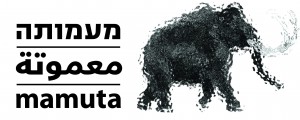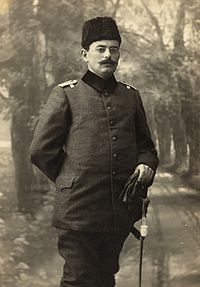6.2.2015, Friday at 10:00 Topic: Tawfiq Kan’aan | Director of the Jesus Hilfe Leprosarium, Artists: Hannan Abu Hussein, Yeshayahu Rabinowitz and Sala-manca group
Tawfiq Kan’aan | Director of the Jesus Hilfe Leprosarium
Tawfiq Kan’aan was born in 1882 in the town of Beit Jala to a Lutheran Christian Arab family. His father was the first Arab Lutheran pastor. Tawfiq attended the Schneller high school in Jerusalem, based on German education precepts. In 1899 he moved with his family to Beirut where he studied medicine at the Syrian Protestant College. He graduated with honors and joined the staff of the German Hospital in Jerusalem. In 1912 he married Margot Eilender. They lived in Jerusalem’s Musrara neighborhood, where Kan’aan also opened a private clinic. From 1919 until 1948 he was the medical director of the Hansen Leper Hospital, where he also conducted several groundbreaking experiments for treating the disease.
Alongside his medical vocation, Kan’aan also became one of the pillars of Palestinian folklore studies, researching live Palestinian patrimony. Combining his medical practice and his folklore research, Kan’aan ventured on various journeys to the rural areas of Palestine. There he collected objects of material culture, made observations and tried to present a picture different from the one shown in travel literature of the time that had described the life of Palestinians and Bedouins as an “authentic expression of Biblical life”. He studied the link between popular religion, magic and madness and began to collect talismans, some of which he received as ‘payment in kind’ for the medical care he provided the inhabitants of rural areas.
As for his political views, for a while he maintained a dialogue with Yehuda-Leib Magnes, President of the Hebrew University of Jerusalem and member of the Brit-Shalom group, regarding a bi-national state. At the same time he began to develop a Palestinian national consciousness. In 1934 he headed a delegation of Arab physicians demanding the British Mandate authorities to limit the work permits allotted Jewish doctors, many of whom were then fleeing Nazi Germany. During the Great Arab Uprising he was already active as a main advocate of the Palestinian national movement. He was one of the first formulators of “The Problem of Palestine” which originated, he claimed, from the scheme undertaken by Zionism and British imperialism to expel the indigenous Arabs from their land. On the day World War Two was declared, Kan’aan was arrested for opposing the British Mandate rule, and was sentenced to prison in Acre for two months. From that time, he cut off his social ties with Jews.
The Tawfiq Kan’aan Talisman Collection at Bir Zeit University
The display of a part of Tawfiq Kan’aan’s talisman collection – consisting of about 1400 objects – became one of the projects developed at the initiative of the Museum of the Contemporary. As early as June 2014, a part of the collection was displayed, presented by three artists invited to take part in this project:
Hannan Abu Hussein chose to relate to one medallion from the collection, showing the inscription Ya kafi ya shafi – “God gives, God heals”. She cast about 20 enlarged concrete versions of this medallion and hung them on a wall of the building as talismans for the hospital itself. This restoration is replicated now in a room on the lower level of the building.
Anat Bar-El chose to relate to the outline of magic dolls: by means of projecting an enlarged photograph of dolls on the wall she created their outline on the white ceramic of the wall itself, and during the exhibition these doll outlines were “peeled off” and thus lost their power and presence. Their magic force gradually disappeared along with their referential capacity. (See image)
Yeshayahu Rabinowitz exhibits six talismans from the Tawfiq Kan’aan collection by means of a meticulous copy of photographs of the virtual catalogue. Rabinowitz’s Palestinian talismans raise questions of cultural dispossession, construction of authenticity, the takeover of memory and quoting to the point of overtaking. They relate not only to the Palestinian talismans of the Kan’aan collection at Bir Zeit University, but also to concepts of ownership, power and artistic politics. The action that Rabinowitz chose to perform reconstructed not only the original talisman but also its new context as an item in a catalogue. By copying the captions that the collection’s catalogue-writers added to the talismans, the reconstruction includes a central aspect in the life of the talisman – its new identity as a sorted, catalogued, political object.

